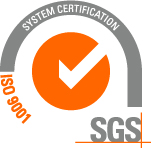The activities carried out by Roma servizi per la Mobilità cover various strands and mainly support the institutional activities of the Department of Mobility.
The first is transportation planning. Through the development of planning studies, future scenarios are constructed for mobility in order to assess both the effectiveness of the new infrastructure (subways, railways, tramways, roads, commuter hubs) and the implementation of new regulations (Limited Traffic Zones, toll parking areas, driving restrictions within the railway ring etc.).
It means predicting how many people will be commuting as the city is transformed and new neighborhoods are born, from where to where will they commute, in what period of time, with what means and by what route, and therefore estimating the traffic on all roads, all public transport systems and the pollution it generates.
This type of activity will be required as part of the technical discussions of the Strategic Plan of Sustainable Mobility in order to identify priorities for implementation and the features of the totality of interventions that it defines.
Another activity is the development of the so-called Decision Support Systems that support the choice of priorities of the Planning. To make transport and socio-economic development-related predictions and assessments, there have been developed a series of mathematical models and databases that provide highly sophisticated representation and simulation of the territorial system (defined by a Local Strategic Plan) and of transport as a whole, from the vast scale on the provincial level to the detail of each individual intersection. It is an area of great innovation where the Agency has developed a significant and unique know-how with the decisive contribution of the Roman universities.
Finally, traffic engineering and road safety. Plans and projects are being developed for traffic, from the General Urban Traffic Plan, a strategic tool for the short-term management of traffic, up to the Detailed Traffic Plans that detail the problems of individual neighborhoods in terms of simple and widespread measures that have a great impact on livability and road safety.
In addition, the sector plans related to individual topics such as goods, two-wheelers, tourist buses, pay parking, the streamlining of traffic by optimizing the control of traffic lights, the temporary roads for the building yards of large construction works.
Road safety is an issue that will be developed in the coming years with specific methods of analysis and design, including through the establishment of dedicated monitoring instruments and the participation in funding under the National Plan of Road Safety. The three-year Security plan is the tool that the City Council has given to Roma servizi per la Mobilità to address this issue.
- Bufalotta-Gronchi-Fucini intersection
- Ponte Ostiense: reduced travel times between Colombo and viale Marconi's area
- Metro line B1
- Piano della sicurezza stradale di Roma Capitale
- Intermodal Rome
- Pedestrianization of the "Tridente Mediceo" area
- Piano del traffico in X municipio

